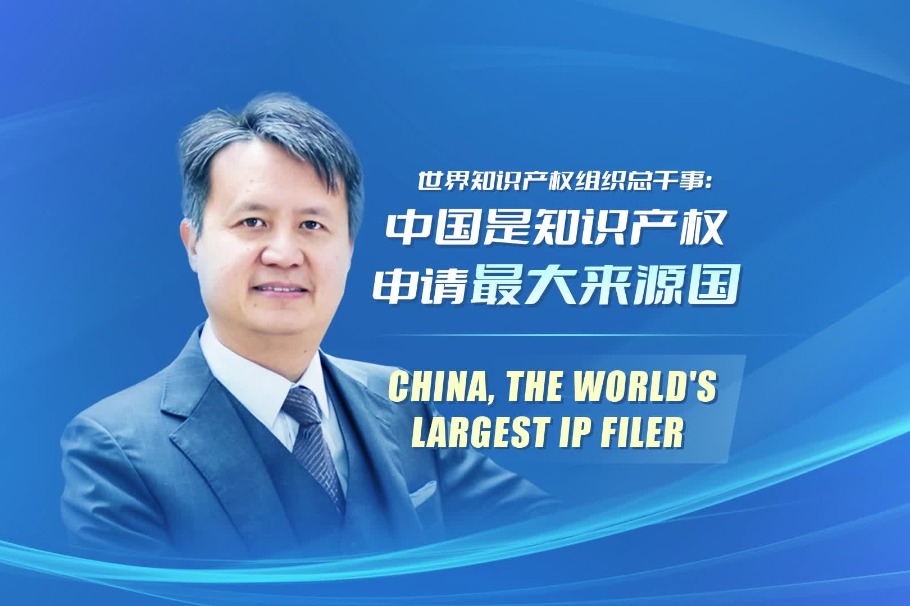New policies and measures upgrade IP protection in China


New changes have been made on IP protection over the past year, with the infrastructure redesigned at the very top, more concrete rules to follow for law enforcement, whole-chain of protection improved, systematic reform deepened, international cooperation and competition advanced and national security issues in the IP filed addressed, according to the fourth-quarter press conference of the China National Intellectual Property Administration (CNIPA) on December 8, which paints a panoramic picture of CNIPA's efforts in transforming China from a major IPR importer into a major IPR creator, from pursuing IPR quantity to improving quality(hereinafter referred as the Two Transformations).
Comprehensively strengthening IP protection
"CNIPA has been beefing up IP protection since the end of 2020, which vigorously speeds up the materialization of the Two Transformations," said Hu Wenhui, Deputy Commissioner of CNIPA's Patent Office and Director General of CNIPA's General Affairs Office.
Specific measures have been taken this year to heighten IP protection in an all-round and multi-tiered way, providing strong support for the rapid progress of the Two Transformations. The Outline for Building a Country Strong on IPR (2021-2035) and the 14th Five-Year National Plan for IP Protection and Application were completed and issued. The newly revised patent law was implemented and the framework and contents of the geographical indication law were drafted to further construct a comprehensive protection work system. Six aspects including 16 measures were made to deepen the reform in streamlining administration, delegating power, improving regulation, and upgrading services. Special campaigns were carried out to crack down on irregular patent applications and malicious trademark registrations. Decisive progress was made in advancing China's accession to the Hague Agreement Concerning the International Registration of Industrial Designs. The China-EU GI agreement was effectively implemented. The independent research and protection of core technologies related to national security were enhanced.
Notable results were achieved in multiple areas. For example, with harsh actions on irregular patent applications and malicious squatting of trademarks as an example, CNIPA, since 2021, has notified local authorities of 4 groups of 815,000 patent applications assessed as irregular, and revoked 93.1% of all applications of the first three groups; sanctioned 376,000 malicious trademark registration applications. In order to severely crack down on irregular applications from unlicensed patent agencies, CNIPA also issued the Notice on Facilitating "Blue Sky" Special Rectification Actions to direct local authorities to punish nearly 200 unlicensed agencies across the country, having imposed combined fines exceeding 10 million yuan.
Starting a new journey of high-quality development
As of date, China is experiencing the Two Transformations. New breakthroughs in IP field have made remarkable contributions to the country's high-quality development, according to the press conference.
"China's export and import volume of IP royalties approached 280 billion yuan in the first three quarters, with the export growth rate spiking at over 27%. In addition, China's ranking rose to No.12 in WIPO's (World Intellectual Property Organization) the Global Innovation Index Report 2021 issued, hitting a new high. Besides, from January to October, the national patent and trademark pledge financing amounted to 240.77 billion yuan with a year-on-year increase of 50.6%, surpassing the total amount of last year, " said Lei Xiaoyun, Director General of CNIPA's IP Utilization and Promotion Department. "The above data clearly defines the progress in advancing the Two Transformations in the outgoing year. "
IP protection has been continuously strengthened, deepened and refined centering on the theme of high-quality development. Zhang Zhicheng, Director General of CNIPA's IP Protection Department, introduced that CNIPA has taken actions in four aspects to enhance the high-quality development of IP administration at the national level. Among them, CNIPA accelerated the building of the index, policy, statistical and assessment systems for high-quality development by constructing a patent quality improvement project, a trademark branding strategy and GI protection demonstration zones as well as a national GIs application promotion project. Also, the "high-value invention patents owned by per 10,000 heads" aim was listed as one projected target of the Plan.
In addition, both the CNIPA and the local administrations all chip in to build an IP public service system that can facilitate access to resources and benefit the people, help all branches of the industrial economy operate stably and sustain the high-quality economic and social development. According to Wang Peizhang, Director General of CNIPA's IP Public Service Department, the national IP public service system has taken an initial shape under the full coverage of IP information public service centers in provinces (regions, municipalities) and vice-provincial cities, and cities separately designated. The coverage of prefecture-level comprehensive public service centers increased to 33%. Also, in cooperation with the WIPO, CNIPA has deployed 101 Technology and Innovation Support Centers (TISCs), having established presence in all provinces. The first group of registered national public service stations amounted to 88 and crucial service stations nationwide reached 269.
"CNIPA will treat quality as the main theme and must-do task of the IP development in the new era based on the active coordination, simultaneous multi-level efforts and coordinated advancement of the entire chain to forge a new path for high-quality development and create a new situation of building a country strong in IPRs," said Zhang.




